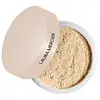Jane Iredale Hydropure Tinted Serum with Hyaluronic Acid & CoQ10 Versus Laura Mercier Ultra Blur Translucent Lose Setting Powder
What's inside
What's inside
 Key Ingredients
Key Ingredients

 Benefits
Benefits

 Concerns
Concerns

 Ingredients Side-by-side
Ingredients Side-by-side

Water
Skin ConditioningGlycerin
HumectantAgar
MaskingDipropylene Glycol
HumectantAlcohol Denat.
AntimicrobialStearic Acid
CleansingSodium Hyaluronate
HumectantGlyceryl Polymethacrylate
Aloe Barbadensis Leaf Juice
Skin ConditioningCalendula Officinalis Flower Oil
MaskingRaphanus Sativus Root Extract
AstringentAvena Sativa Kernel Extract
AbrasiveHyaluronic Acid
HumectantCamellia Sinensis Leaf Extract
AntimicrobialCetyl Ethylhexanoate
EmollientGlyceryl Acrylate/Acrylic Acid Copolymer
HumectantTromethamine
Buffering1,2-Hexanediol
Skin ConditioningPolysorbate 60
EmulsifyingGlyceryl Stearate
EmollientCaprylic/Capric Triglyceride
MaskingBoron Nitride
AbsorbentButyrospermum Parkii Butter
Skin ConditioningSqualane
EmollientBeeswax
Emulsion StabilisingSorbitan Olivate
EmulsifyingMagnesium Aluminum Silicate
AbsorbentEthylhexylglycerin
Skin ConditioningAllantoin
Skin ConditioningSalix Nigra Bark Extract
Skin ProtectingChondrus Crispus Extract
Skin ConditioningMagnesium Ascorbyl Phosphate
AntioxidantUbiquinone
AntioxidantDisodium EDTA
Tocopheryl Acetate
AntioxidantAlgae Extract
EmollientMica
Cosmetic ColorantCI 77891
Cosmetic ColorantCI 77491
Cosmetic ColorantCI 77492
Cosmetic ColorantCI 77489
Cosmetic ColorantCI 77499
Cosmetic ColorantCI 77288
Cosmetic ColorantWater, Glycerin, Agar, Dipropylene Glycol, Alcohol Denat., Stearic Acid, Sodium Hyaluronate, Glyceryl Polymethacrylate, Aloe Barbadensis Leaf Juice, Calendula Officinalis Flower Oil, Raphanus Sativus Root Extract, Avena Sativa Kernel Extract, Hyaluronic Acid, Camellia Sinensis Leaf Extract, Cetyl Ethylhexanoate, Glyceryl Acrylate/Acrylic Acid Copolymer, Tromethamine, 1,2-Hexanediol, Polysorbate 60, Glyceryl Stearate, Caprylic/Capric Triglyceride, Boron Nitride, Butyrospermum Parkii Butter, Squalane, Beeswax, Sorbitan Olivate, Magnesium Aluminum Silicate, Ethylhexylglycerin, Allantoin, Salix Nigra Bark Extract, Chondrus Crispus Extract, Magnesium Ascorbyl Phosphate, Ubiquinone, Disodium EDTA, Tocopheryl Acetate, Algae Extract, Mica, CI 77891, CI 77491, CI 77492, CI 77489, CI 77499, CI 77288
Mica
Cosmetic ColorantLauroyl Lysine
Skin ConditioningZinc Stearate
Cosmetic ColorantAluminum Starch Octenylsuccinate
AbsorbentSilica
AbrasiveC13-15 Alkane
SolventEthylhexylglycerin
Skin ConditioningHelianthus Annuus Seed Oil
EmollientTocopherol
AntioxidantSodium Hyaluronate
HumectantSorbic Acid
PreservativeBlue 1 Lake
Cosmetic ColorantIron Oxides
CI 77742
Cosmetic ColorantCI 15850
Cosmetic ColorantCI 77891
Cosmetic ColorantCI 77007
Cosmetic ColorantCI 19140
Cosmetic Colorant
 Reviews
Reviews

Ingredients Explained
These ingredients are found in both products.
Ingredients higher up in an ingredient list are typically present in a larger amount.
Ci 77891 is a white pigment from Titanium dioxide. It is naturally found in minerals such as rutile and ilmenite.
It's main function is to add a white color to cosmetics. It can also be mixed with other colors to create different shades.
Ci 77891 is commonly found in sunscreens due to its ability to block UV rays.
Learn more about CI 77891Ethylhexylglycerin (we can't pronounce this either) is commonly used as a preservative and skin softener. It is derived from glyceryl.
You might see Ethylhexylglycerin often paired with other preservatives such as phenoxyethanol. Ethylhexylglycerin has been found to increase the effectiveness of these other preservatives.
Mica is a naturally occurring mineral used to add shimmer and color in cosmetics. It can also help improve the texture of a product or give it an opaque, white/silver color.
Serecite is the name for very fine but ragged grains of mica.
This ingredient is often coated with metal oxides like titanium dioxide. Trace amounts of heavy metals may be found in mica, but these metals are not harmful in our personal products.
Mica has been used since prehistoric times throughout the world. Ancient Egyptian, Indian, Greek, Roman, Aztec, and Chinese civilizations have used mica.
Learn more about MicaSodium Hyaluronate is hyaluronic acid's salt form. It is commonly derived from the sodium salt of hyaluronic acid.
Like hyaluronic acid, it is great at holding water and acts as a humectant. This makes it a great skin hydrating ingredient.
Sodium Hyaluronate is naturally occurring in our bodies and is mostly found in eye fluid and joints.
These are some other common types of Hyaluronic Acid:
Learn more about Sodium Hyaluronate